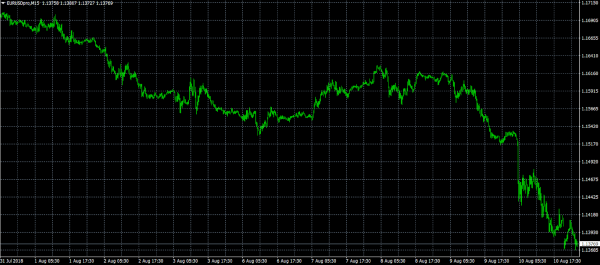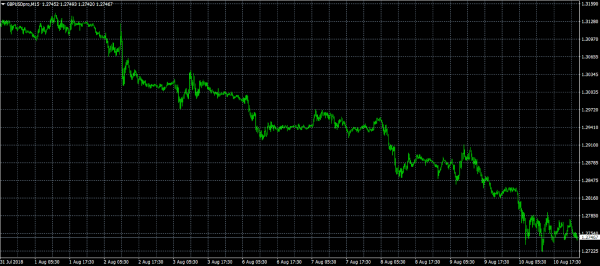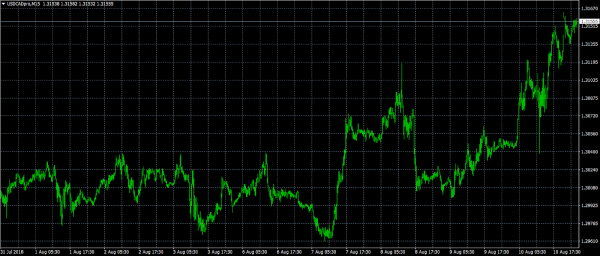With virtually no major market moving events to report on Monday, investors are already shifting their focus to the remainder of the week. That said, the fallout from the Turkish lira crisis is top of mind for market participants as the US dollar hovers near yearly highs.
The lira plunged by as much as 20% on Friday, reaching its lowest level on record as domestic volatility and geopolitical risks triggered a flight from Turkish assets. At the same time, the US dollar reached its highest level since July 2017.
The US dollar index (DXY), which tracks the performance of the greenback against a basket of six currencies, closed at 96.36 on Friday. At the time of writing, the index was up 0.1% to 96.44. With the gain, DXY has returned 4.7% in 2018 even after one of its worst starts to a year on record.
In terms of economic releases, the only report of note for Monday is Italy’s consumer price index (CPI). The July reading is expected to show 0.3% growth compared with the previous month. That likely translates into an annualized growth rate of 1.4%. Italy CPI calculated using European Union methodology is likely to come in at 1.9% year-over-year.
EUR/USD
Europe’s common currency opened the week at a new low, raising the spectre of a more far-reaching decline in the not-too-distant future. Like other currencies, the euro is being dragged under by the collapse of the Turkish lira. At the time of writing, the EUR/USD exchange rate was worth 1.1376, having declined 0.3% from Friday’s close. The common currency now sits at its lowest level in 13 months. In terms of technical indicators, the pair has broken through the 1.1385 support cluster, opening the door to 1.1350 and 1.1320. On the opposite side of the ledger, immediate resistance is found at 1.1440 followed by 1.1490.
GBP/USD
Cable also pivoted lower on Monday and was on track for fresh lows as the dollar continued to gain momentum against its peers. The GBP/USD exchange rate slipped 0.2% to 1.2745, its lowest in over a year. Cable was unable to reverse its fortunes Friday even as the gross domestic product (GDP) grew at a faster than expected 0.4% in the second quarter, which brought annual growth to 1.3%.
USD/CAD
Like other US dollar peers, the Canadian loonie has been unable to break from the recent downtrend despite better than expected jobs data on Friday. The Canadian economy added 54,100 jobs for the month of July, following a net gain of 31,800 the previous month. The USD/CAD exchange rate currently sits at 1.3158, the highest in nearly three weeks.















